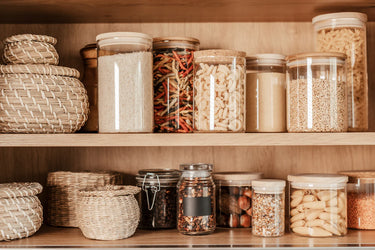What Is Béarnaise Sauce? And Why Is It So Popular?

If you’ve been searching for the ideal complement to your perfectly cooked steak, look no further than béarnaise, a traditional French sauce made from a base of egg yolks, butter, and vinegar. Though béarnaise is often cited as coming from the French city of Béarn, its lineage is lost to time. Béarnaise is a derivative of hollandaise, one of the five mother sauces of French cuisine. (The four other mother sauces are espagnole, velouté, sauce tomate, and béchamel.) Best known state-side for crowning plate after plate of eggs benedict, hollandaise is a cooked emulsion of fat and liquid, plus an acidic kick that comes from lemons. Béarnaise, on the other hand, features vinegar, along with its trademark seasoning components of shallots, pepper, and tarragon.
Why is béarnaise sauce so popular?
To reduce béarnaise’s popularity to its components would be to miss the point. Cooking is about creating a gestalt, making something that is more than the sum of their parts, and nothing is a better illustration of this than béarnaise. The fat from the egg yolks and butter play off the acidic vinegar, which are enhanced and activated by the salt. Perhaps, though, béarnaise’s excellence comes from the generous amount of pepper that elevates the flavor triumvirate to something higher. We cannot ignore the value of tarragon’s earthy notes nor the subtle umami from the cooked shallots. Likely, it is the forwardness of the acid in béarnaise that makes it so delectable when paired with steak or other fatty meats.
Though the ingredients are basic, the method takes some finagling to get used to. Liquid and fat are inherently incompatible. As Bill Buford wrote in the New Yorker about his attempt to master béarnaise, “the secret code of French cooking—its flair—seems always to involve getting two incompatible elements to live with each other.” Buford traces béarnaise’s roots back to the Italian foam sauce zabaglione, which evolved to a sauce called sabayon in French cooking. Reduce the water component of the sauce too much—that’s the vinegar, in béarnaise—and the sauce will break.
How do you make béarnaise sauce?
Traditional recipes for béarnaise call for clarified butter, which is made by heating butter until the milk solids separate, then pouring that golden liquid off. Today, many chefs have jettisoned that requirement, simply using melted butter. Same goes for the traditional use of a double boiler to make béarnaise—now, many find hot butter is enough to cook the yolks. That being said, if you’re concerned about raw egg yolks, opt for pasteurized yolks, instead (or skip the sauce entirely).
You’ll start by infusing vinegar with gently cooked shallots, fresh tarragon, and freshly ground black pepper (the large grind on a HexClad pepper grinder will do wonders here), then cooling it. Next, you’ll whisk egg yolks into the cooled vinegar mixture, and then stream in melted butter slowly so it emulsifies into a thick sauce. That basic method has been riffed on by countless chefs since there are as many ways to play with a béarnaise as there are ways to eat it. Over at Serious Eats, J. Kenji López-Alt uses an immersion blender to emulsify his béarnaise sauce, relying on the vortex it creates to create a strong, stable emulsion. Bill Buford’s recipe calls for keeping a glass of water on hand in case the emulsion breaks. Jean Toutou at Epicurious relies on a blender to transform the standard béarnaise ingredients into a silky sauce.
Some recipes for béarnaise include chervil—an herb related to parsley—but it’s not required. Of course, there are no hard and fast rules for making this delicious sauce. If you want to stir in capers, do it. Fancy a bit of chopped anchovy stirred in? That would be tasty, too.
What should I serve with béarnaise sauce?
Though commonly served with steak, béarnaise is delicious with a wide variety of foods. It plays well with any number of meats, from pork tenderloin to lamb chops to poached chicken breast. Swap it in for the hollandaise on your eggs benedict, spoon it over baked fish like cod or salmon, or drizzle over roasted asparagus or broccoli. Serve leftover béarnaise sauce on steak sandwiches, or dolloped on smoked salmon. Potatoes are no stranger to béarnaise, since they’re often served alongside steak. Branch out beyond frites or wedges by serving béarnaise spooned over a baked potato or steamed new potatoes, instead.





